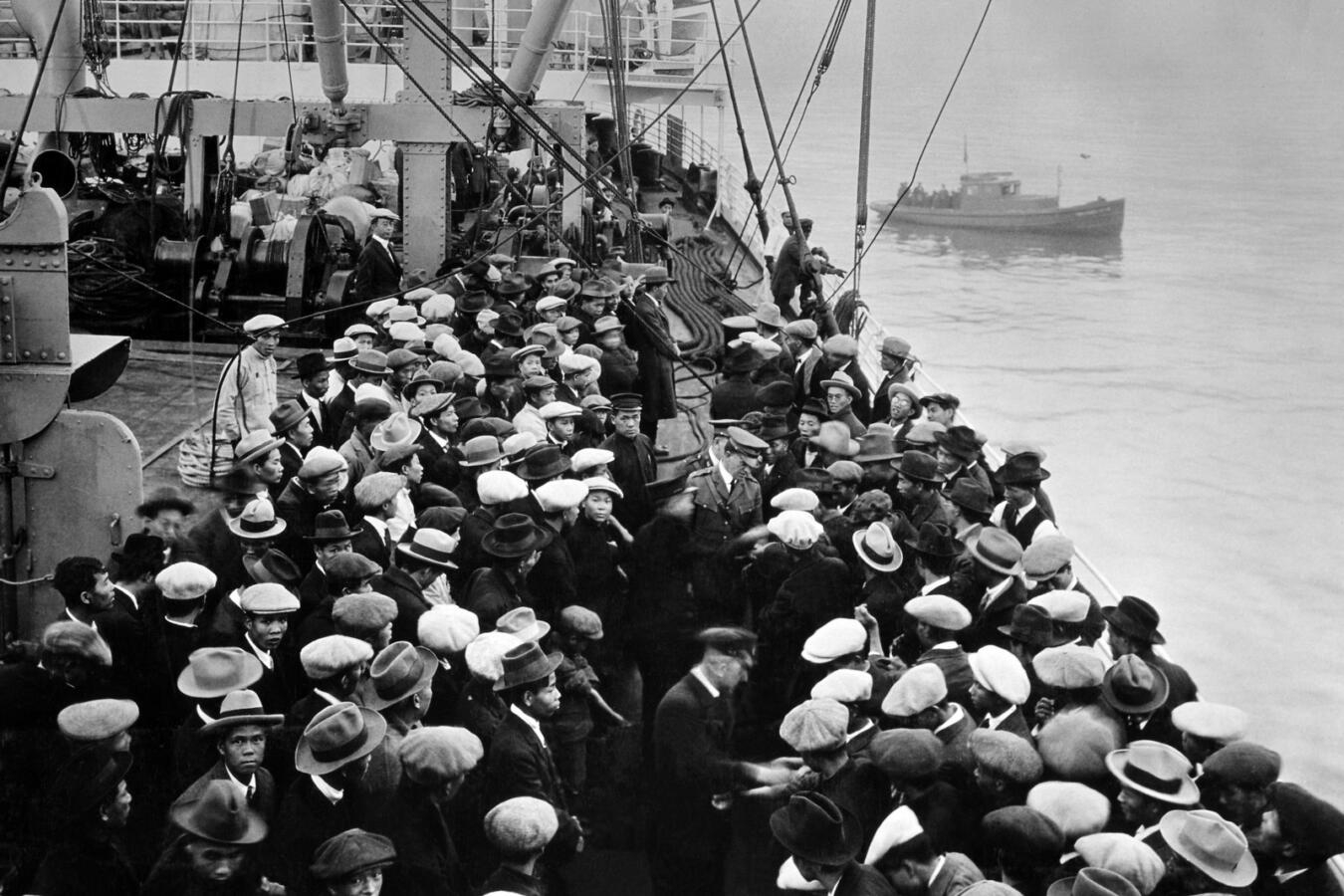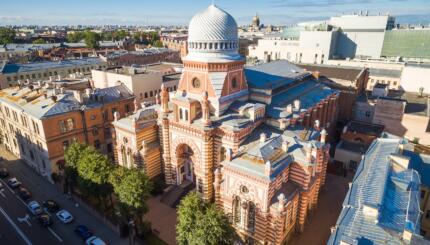The 1920s and 1930s witnessed an intense effort on the part of “second generation” American Jews to acculturate. With the doors of immigration virtually shut by Congress in 1924, immigrant culture was no longer sustained by a steady influx of “greenhorns.” Native-born Jews soon outnumbered first generation immigrants. The archetypal Jew became the “alrightnik,” on his or her way to acculturation and middle class respectability while retaining a strong Jewish identity constructed primarily along ethnic lines.
Residential Patterns
One way in which success was measured was geographically. To be sure, most second generation Jews continued to live in ethnically Jewish neighborhoods. But they were quick to venture out of first and even second areas of settlement to more middle class communities. In New York, this meant trading in addresses on the Lower East Side and even Brownsville and Williamsburg, for those in Flatbush, the Grand Concourse, and Manhattan’s Upper West Side.
Although most Jews continued to be apartment dwellers, many of these newly Jewish neighborhoods had a suburban feeling. Rental advertisements typically touted the tree-lined streets and the proximity of parks.
Many Jews imagined that the move to middle class neighborhoods would result in greater social interaction with non-Jews. But they were often mistaken. As Jews moved in, white Protestants moved out. Nevertheless, as Jews increasingly joined the ranks of the middle class, they recreated Jewish culture to reflect their newly acquired American bourgeois values. Among the cardinal innovations was the consumerization of Judaism. Consider, for example, the evolution of the from a simple synagogue ritual where a 13-year-old boy is called to the for the first time, to an elaborate affair with catered food and orchestral music.
With your help, My Jewish Learning can provide endless opportunities for learning, connection and discovery.
Americanized Synagogues
American Jews increasingly found ways of synthesizing Jewish and American elements in their daily lives. Even the immigrant synagogue was Americanized. Alarmed by a decline in synagogue attendance and religious observance, rabbis and community leaders sought ways of making the synagogue more palatable to second generation American Jews, whom they feared would succumb to assimilation. Eastern European congregations with Yiddish speaking rabbis increasingly hired English speaking junior rabbis who could preach to the younger congregants.
Rabbis like Herbert Goldstein and Mordecai Kaplan popularized the concept of the synagogue-center, the “shul with a pool,” expanding the walls of the traditional synagogue to include educational programming, social activities, and even athletic facilities. Grandiose multi-purpose synagogue buildings were erected in Jewish communities throughout the United States. While the synagogue-center began as an Orthodox and Conservative phenomenon, it quickly spread to Reform congregations as well.
Focus on Children
Another manifestation of the Americanization of Judaism was a newfound emphasis on child-centered celebration. The Jewish Home Beautiful (1941) reflected this trend with its recipes for Maccabean Sandwiches and Menorah Vegetable Salad. Jewish themed children’s books also became ubiquitous by the beginning of World War II. Sadie Rose Weilerstein’s K’tonton, “the Jewish Tom Thumb” delighted youngsters with his perilous ride on the chopping knife and his ride on a runway dreidel.
Jewish education was also revolutionized during this period. Under the influence of Samson Benderly, an educator born in Palestine under the British Mandate, who ran the New York Bureau of Jewish Education, the field was professionalized and innovative teaching techniques were introduced. Benderly and his protégés emphasized cultural Zionism and the teaching of Hebrew as a spoken language. They opened up bureaus of Jewish education and Hebrew teacher’s colleges across the United States.
Economics
Jewish upward mobility and unbridled acculturation were stymied somewhat by the Great Depression and the strengthening of domestic anti-semitism in the 1930s. Jews were disproportionately employed in white-collar occupations and suffered less economic dislocation than other ethnic groups. Yet, many still experienced unemployment and destitution. With the failure of the Bank of the United States, many Jews saw their life-savings virtually disappear. Jewish garment workers, who comprised one-third of New York’s Jewish population, were overcome by layoffs.
For young Jews entering the labor market, the discriminatory hiring practices of many businesses constricted an already lean job market. Those whose families could get by chose to stay in school. But there too, they were confronted with social manifestations of anti-semitism in the form of restrictive quotas.
While many Jews had no choice but to accept government welfare, they saw it as a last resort, preferring their own support systems. New York’s Hebrew Free Loan Society offered approximately one million dollars to needy business owners and families during the Depression.
The mutual aid societies and landsmanschaften (hometown societies) that one historian has called “the backbone of the immigrant Jewish community,” had a difficult time responding to the increasing needs of their members. Many were forced to discontinue their traditional services and benefits. Jewish Federations, which were funded by the more affluent, were better equipped to dispense aid through their various agencies.
The Depression also had a dire affect on communal institutions as funding sources dried up. The synagogue center building boom of the 1920s came to an abrupt halt, only to resume again after the Second World War. With mounting deficits and unpaid mortgage debts, there was recognition that the “building craze” of the 1920s was ill conceived. Economic woes, however, did not result in a major change in the direction of synagogue programming. Starved for dues-paying members, synagogues continued to play up their educational, social, and cultural programming. However, as operating budgets were slashed, the variety of offerings was necessarily curtailed.
Politics & the Holocaust
The 1930s also witnessed the alignment of the Jewish community with the national Democratic Party. While significant numbers of Jews continued their involvement in radical politics, interwar Jews were increasingly embracing liberalism. In the 1920s, New York’s local Democratic party, under the leadership of Al Smith and Robert F. Wagner Sr., succeeded in attracting many immigrant Jews and their children due to its championing of social welfare issues and economic reform.
But the Jewish allegiance to the Democratic Party was cemented through their love affair with Franklin D. Roosevelt. If they supported his New Deal policies, they adored F.D.R. because he opened government service to Jews and counted an unprecedented number of Jewish advisors among his inner circle.
As conditions deteriorated in Europe, American Jews fervently believed that Roosevelt would act to save their brethren. Here, their confidence was misplaced. Facing stiff Congressional opposition, Roosevelt’s government did nothing to ease strict immigration quotas in the late 1930s. This indifference, or at the very least unwillingness to expend political capital, effectively consigned many European Jews to Hitler’s Final Solution. Of course, in the late 1930s, Roosevelt had no way of divining the effects of his policies.
American Jews responded to Hitler’s rise and America’s immigration restrictions by embracing Zionism and increasing their support for building up the Jewish national home and the resettlement of refugees in Palestine. Membership in Zionist organizations and participation in Zionist youth groups grew rapidly in the mid-to-late 1930s. Zionist themes increasingly found their way into rabbinical sermons and religious school curricula. The blue and white charity boxes of the Jewish National Fund became a familiar fixture in Jewish homes. Even the Reform movement, which had been staunchly opposed to Zionism, officially reversed its position in 1937.
In retrospect, the Depression years turned out to be a minor setback. Economic instability and domestic anti-semitism largely disappeared after the Second World War. It was the 1920s, with its trends towards upward mobility and Americanization that set the tone for American Jewish community in the post-war era.
mitzvah
Pronounced: MITZ-vuh or meetz-VAH, Origin: Hebrew, commandment, also used to mean good deed.



